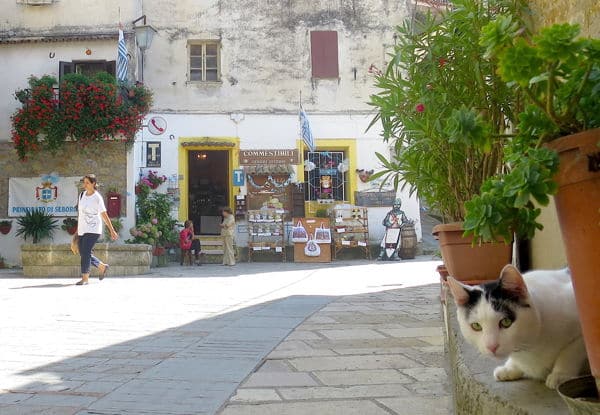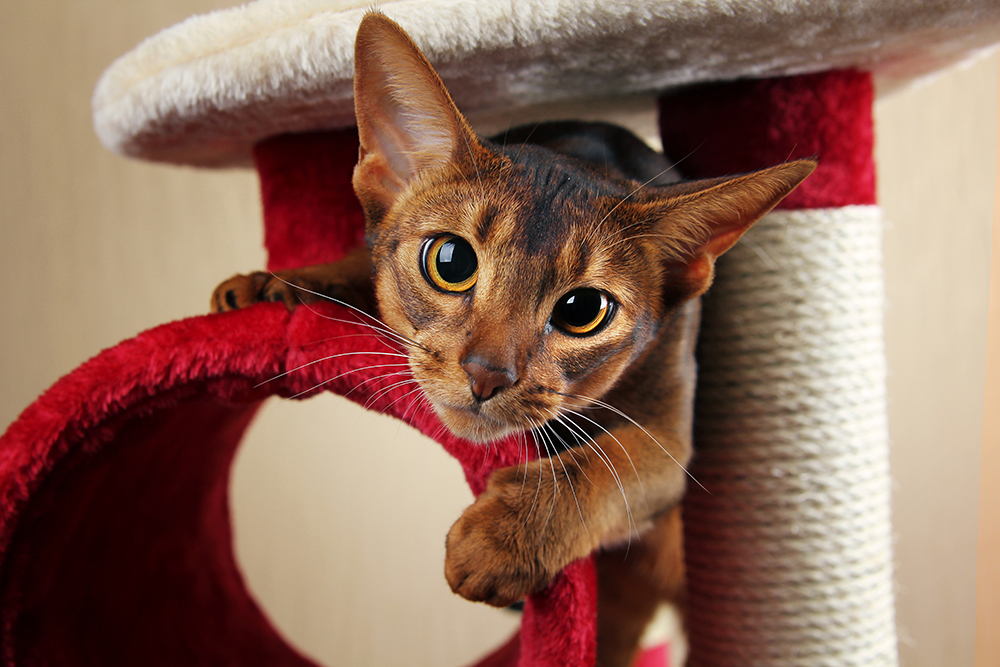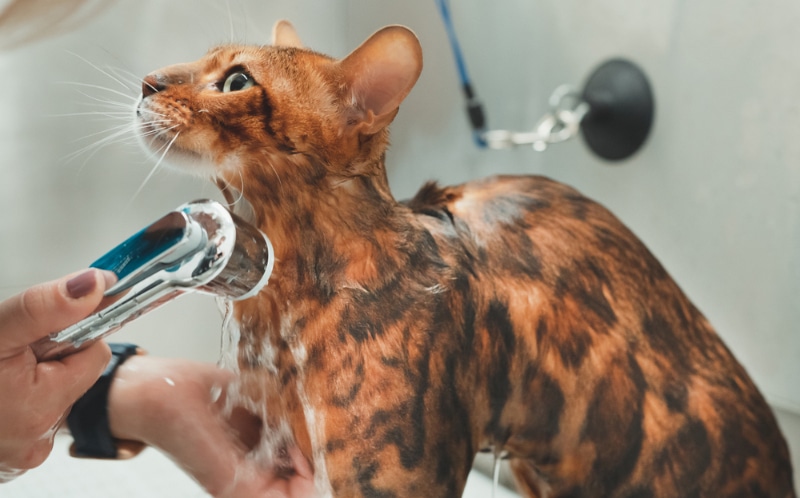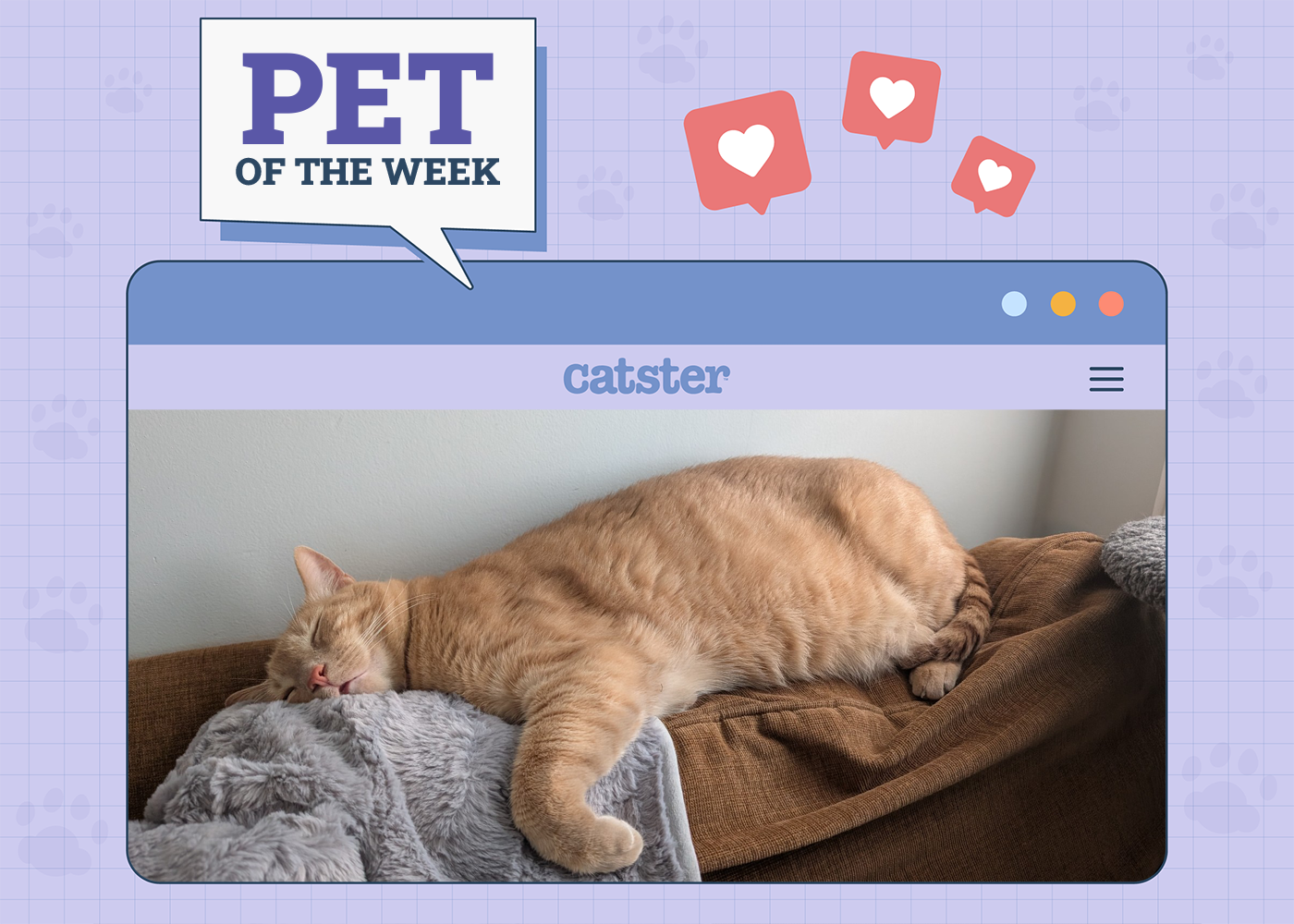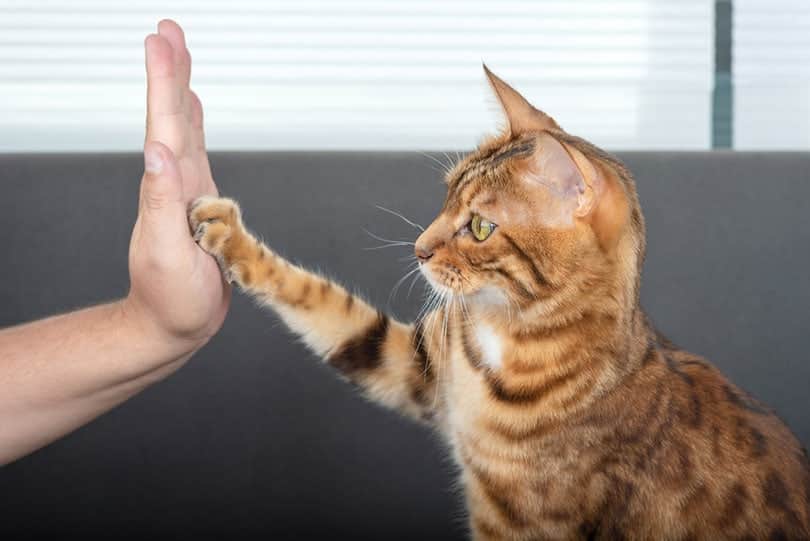Tucked away in the southernmost foothills of the Alps, within sight of the Mediterranean Sea, is a tiny and little-known nation teeming with cats.
The Principality of Seborga is so small that it has only a few hundred inhabitants and just one town — but everywhere you look, down every alley and on every balcony, you’ll see cats, cats, cats, relaxing on a lazy afternoon.

But we’re getting ahead of ourselves. Cats aside: How can there be an entire European country that you’ve never heard of?
Simple: Like its nearby fellow “micro-nations” such as Monaco, San Marino, and the Vatican, The Principality of Seborga is a remnant of Europe’s medieval past when each town claimed sovereignty as an independent city-state. But unlike its better-known neighbors, modern Seborga has yet to be granted formal recognition by Italy (within whose borders it lies) or the United Nations. So it languishes in obscurity, an entire nation relaxing in the afternoon sun, waiting to be noticed.
Yet that doesn’t mean its claims to legitimacy and independence are any less valid than the claims of San Marino or the Vatican. It’s just that Seborga fell through the cracks of history, and its status as an independent nation was simply forgotten — until recently.
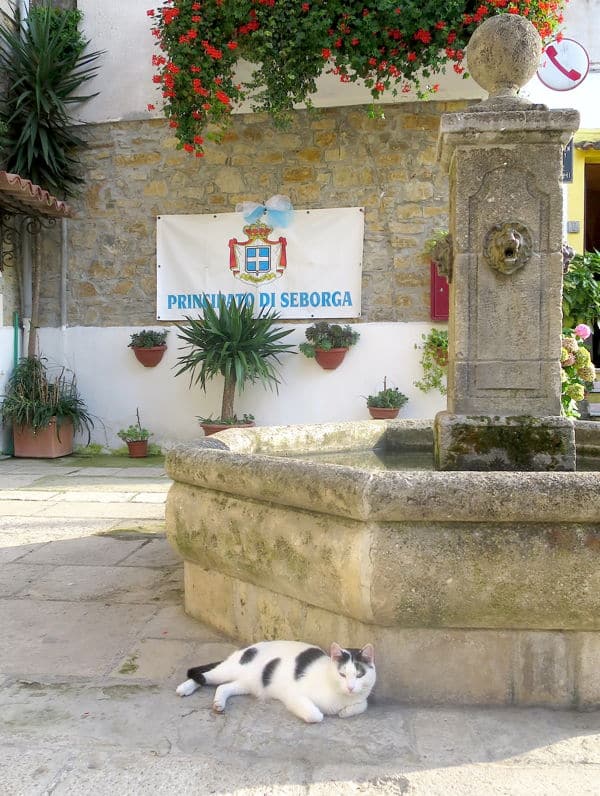
Seborga is perched on a hilltop above the resort town of Bordighera on the Riviera, in the extreme northwest corner of Italy, just a stone’s throw from the French border. Its medieval center is a warren of cobblestone alleyways and covered passages — a delight to the eye, but in a city of cats the absence of any exposed dirt becomes a curse for the nose, because there is nowhere for the cats to bury their droppings. As a consequence, the kitties of Seborga have evolved the unique but rather unsanitary canine-style behavior of just walking away from their unburied poo. Seborga doesn’t just look medieval — it smells medieval too.
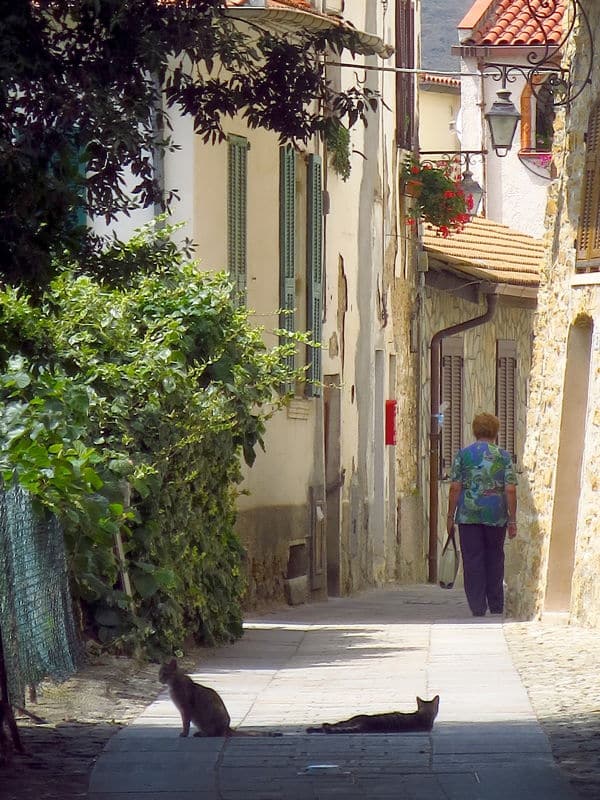
If you look up Seborga on the Internet you won’t find any mention of cats. That’s because few of the people writing about the place have ever visited in person. But once you wander through the streets of town, you can’t help but notice the feline presence everywhere, even though up until now cats haven’t been part of the standard Seborga story.
We tried asking various locals why Seborga seems to be overrun with cats, but the most common response was, essentially, “Cats? Hmmmm — now that you mention it, there are a lot of cats around here, but I never really paid them much mind.” It seems that Seborga’s catfulness was not intentional; it’s just one of those things that happens by accident over time when no one is paying attention.
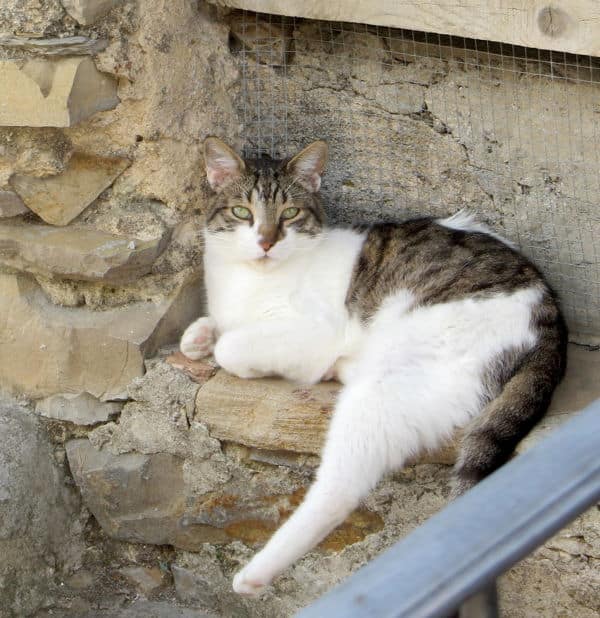
Seemingly every household in Seborga has at least one cat; cats peer out from windows, perch on window sills, rub up against visitors. Several “community cats” hang out in the town square, not quite wild but not quite the property of any one owner either. And feral cats prowl the dark recesses of town before returning home to the huge feral colony just outside the ancient town walls.
The nation’s only mini-supermarket, just off the central plaza, has two rooms: the main area for human food — and a small room at the back devoted entirely to cat food and other pet products.
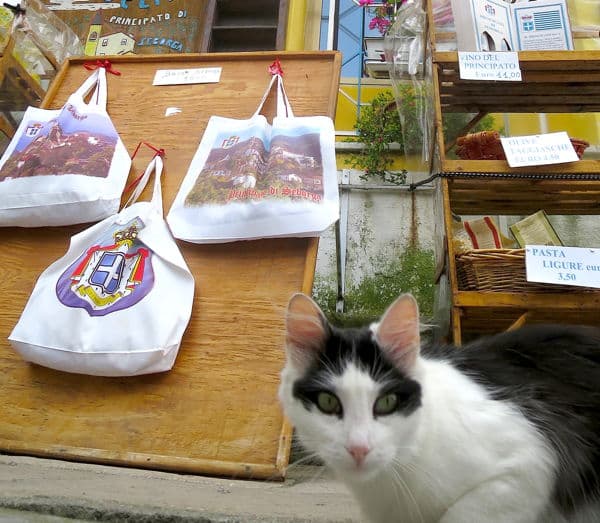
Seriously, though: Is Seborga really a separate country?
A little Italian history will clear things up:
Prior to 1861, there was no nation of Italy; the entire Italian peninsula was a motley quilt of independent city-states and rival mini-republics. A chaotic period of wars and treaties in the mid-19th century finally forged the nation of Italy from these scattered parts — with a couple of notable exceptions. Most famous among these are the Vatican, an enclave inside Rome that retained its status as an independent state; and San Marino, the only secular city-state that officially managed to avoid becoming incorporated into the new nation of Italy in 1861.

Seborga was originally founded as Castrum Sepulchri during the late Roman Empire. During the Middle Ages, though, it fell under the control of a local feudal lord, who gave the town in its entirety to a Benedictine monastery. The monastery’s abbot became the official prince of the town, which was then recognized by the Holy Roman Empire in the 11th century as an independent city-state — just like Pisa and Genoa and Florence and all the other city-states in and around the Italian peninsula.
In 1666, still independent, Seborga founded a mint and issued its own legal currency, called the Luigino.
A turning point in Seborga’s history and the linchpin to its modern claim of continued independence came in 1748, when a treaty confirming an earlier sale of the entire region from the Duke of Savoy to the King of Sardinia listed as sold every single town and village — except Seborga. Whether this was because of an oversight or simply in recognition of its independence is lost in the mists of history. But because of this omission all subsequent treaties also failed to mention Seborga, most likely because it simply fell off the radar.
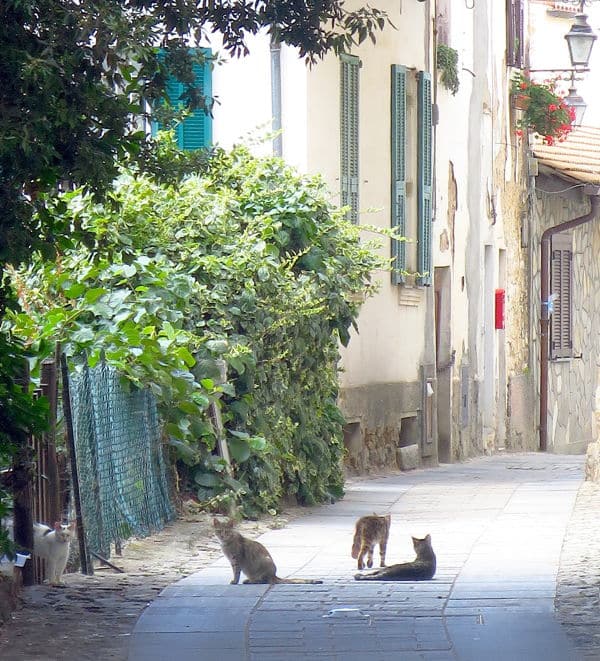
The culmination came in 1861 with the official Unification of the Kingdom of Italy — a treaty that listed every city-state, principality, and fiefdom ceded by the Kingdom of Sardinia to become the nation of Italy. Yet once again there was no mention of Seborga.
Nearly a century went by and no one noticed or commented on this oversight, when finally in the late 1950s a local horticulturalist and amateur Seborga historian named Giorgio Carbone dug up the original historical documents and realized that Seborga had never officially been incorporated into Italy and was therefore still an independent sovereign state.

He rallied the townspeople behind his discovery and in 1963 the citizens of Seborga voted overwhelmingly to affirm their independence. Since the original Benedictine monks were long gone, as were all the feudal lords, they decided to elect a new prince democratically, and Giorgio was the obvious choice.
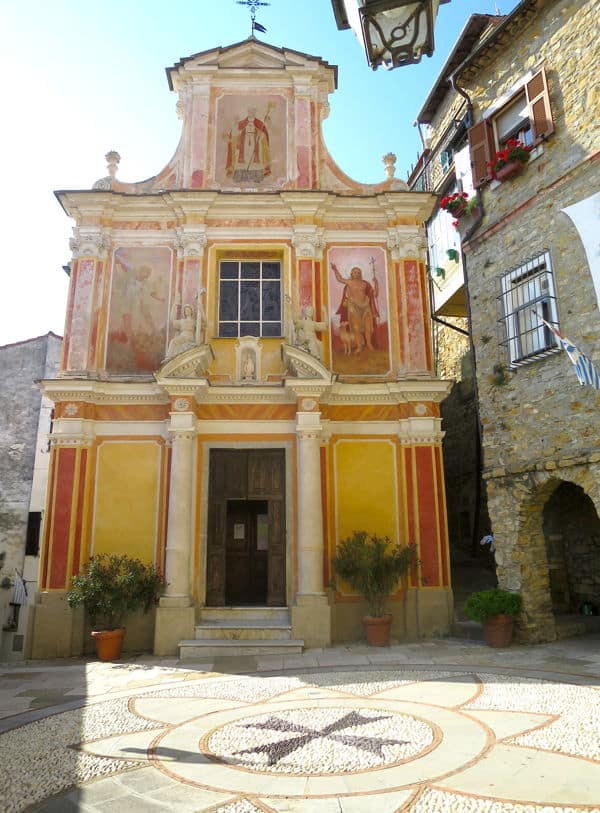
Renaming himself Prince Giorgio I, he assumed power and “ruled” beneficently over Seborga from 1963 until his death in 2009. During his reign, Seborga adopted the trappings of a separate country, with a guard post at the “border,” a ceremonial army, coins, stamps, and even a constitution. In 2010, Seborgans elected a new leader, Prince Marcello I, who presides over his royal guards, performs official ceremonies, and maintains Seborga’s claims of independence. (Even so, the guard post at the border is now empty, and all the Seborgan coins and stamps sold today at Seborga’s shops are left over from Giorgio I’s reign — no new ones have been made since. )
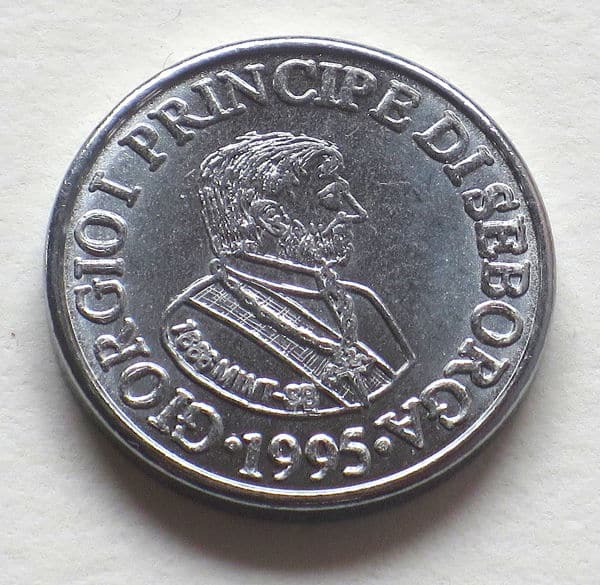
In fact, many nations — including San Marino, most of Africa, and smaller countries around the globe — have officially recognized Seborga’s statehood. And when Marcello I travelled to London in 2011, Queen Elizabeth formally received him as a visiting head of state. Yet Seborga’s 2000 application to join the U.N. has so far received no response. Seborgans shrug and have no choice but to continue to pay Italian income tax, at least until their case finally gets a hearing.
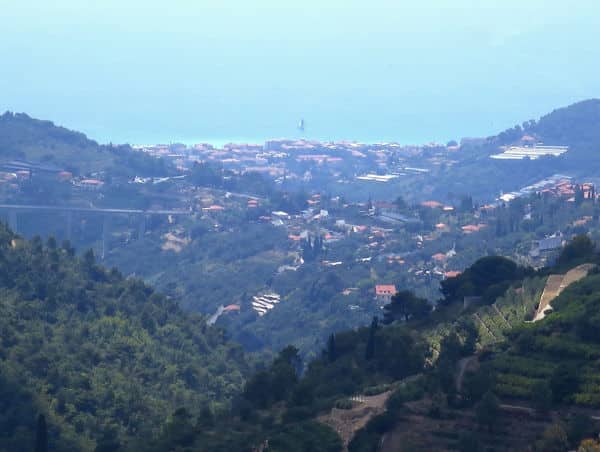
Maybe if Seborga granted its cats citizenship, the world would finally sit up and take notice.
Featured Image Credit: Kristan Lawson

